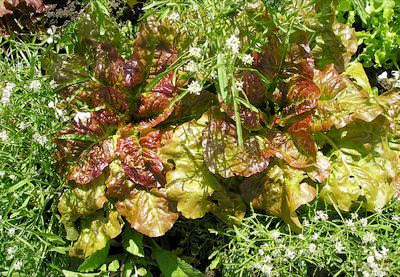
“It takes about 15,000 to 30,000 square feet of land to feed one person the average U.S. diet. I’ve figured out how to get it down to 4,000 square feet. How? I focus on growing soil, not crops.”
Biointensive farming incorporates many of the same practices as biodynamics, and takes them a few steps further. In addition to double-digging (tilling beds to a depth of 24 inches for greater aeration), planting in space-saving hexagonal or triangular patterns, planting complementary crops in the same space, and composting, farmers or gardeners employing biointensive methods use higher-energy crops (such as root crops) to increase the amount of calories a small piece of land will produce, grow some crops for use exclusively as compost (such as rye and alfalfa), and practice strict crop rotation to preserve soil productivity, among other things.
Stretching the productivity of a small amount of space is one way to increase harvests. Stretching out the growing season is another. According to a recent article in the New York Times, “extreme season extension” is growing in popularity as demand for local food increases. Using unheated low metal hoop houses and double-row covers, some farmers in the northern United States have managed to extend the season for certain produce through the spring, making crops like spinach and herbs available locally year-round. Hoop houses, it turns out, are cheaper than greenhouses; doubly so since, as temporary structures, they aren’t subject to property taxes. Another season extension technology is called a high tunnel, which can be large enough to accommodate a tractor. With the popularity of both methods increasing, we may soon see local, organic strawberries on store shelves–in January.
Nice. These are the economic growths worth cultivating.